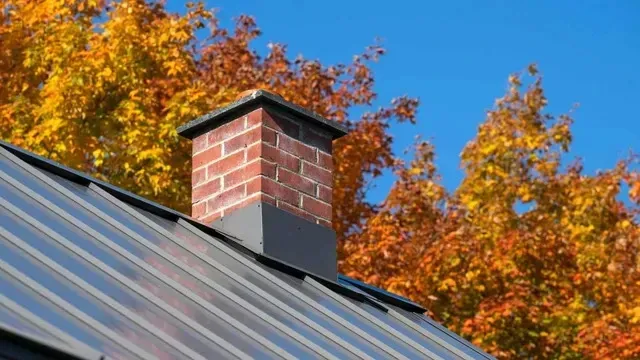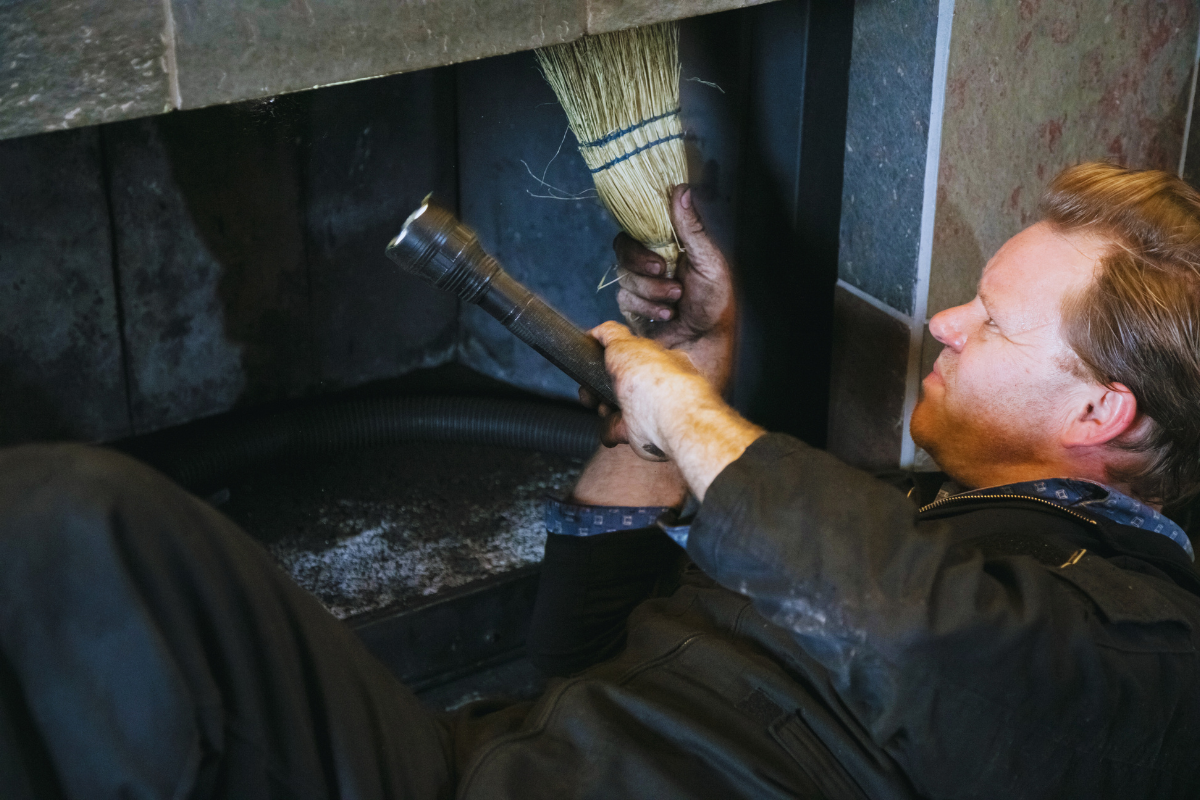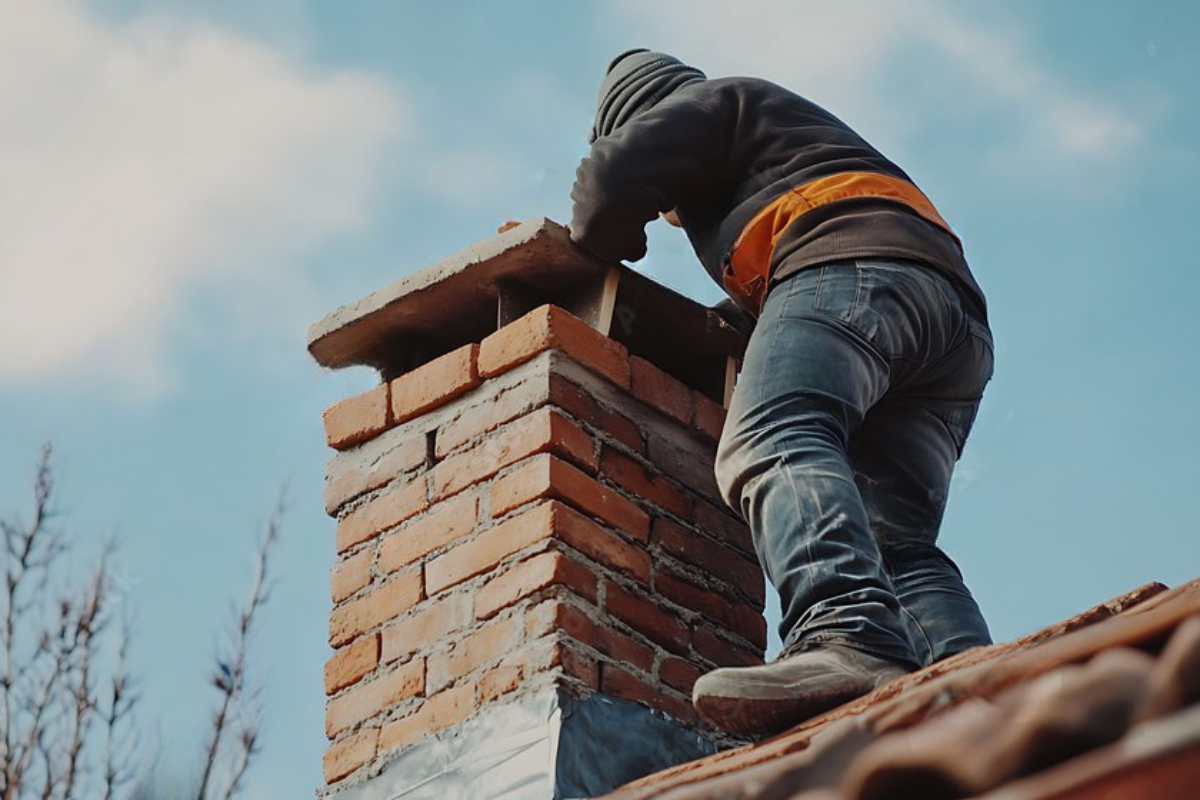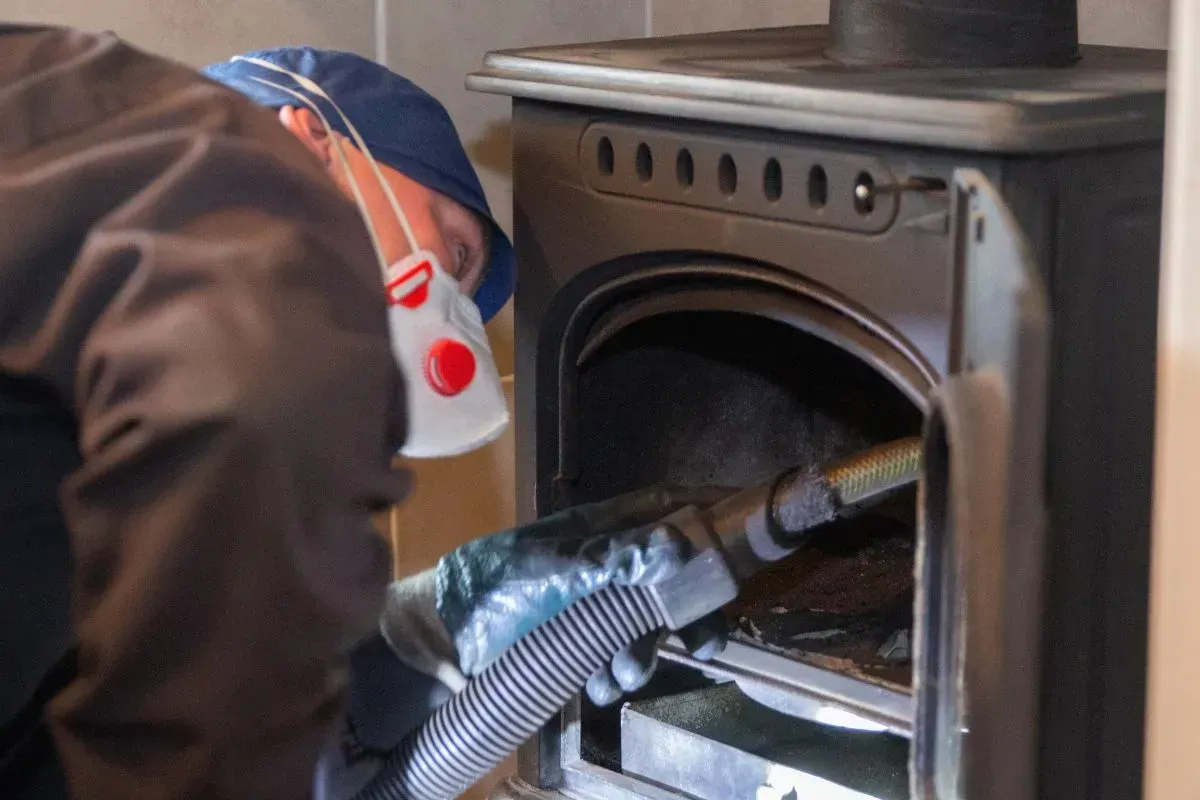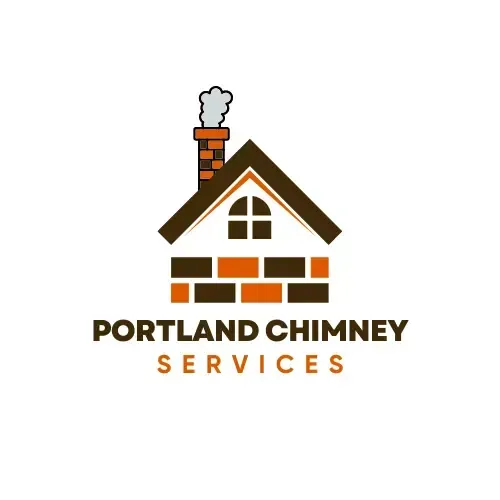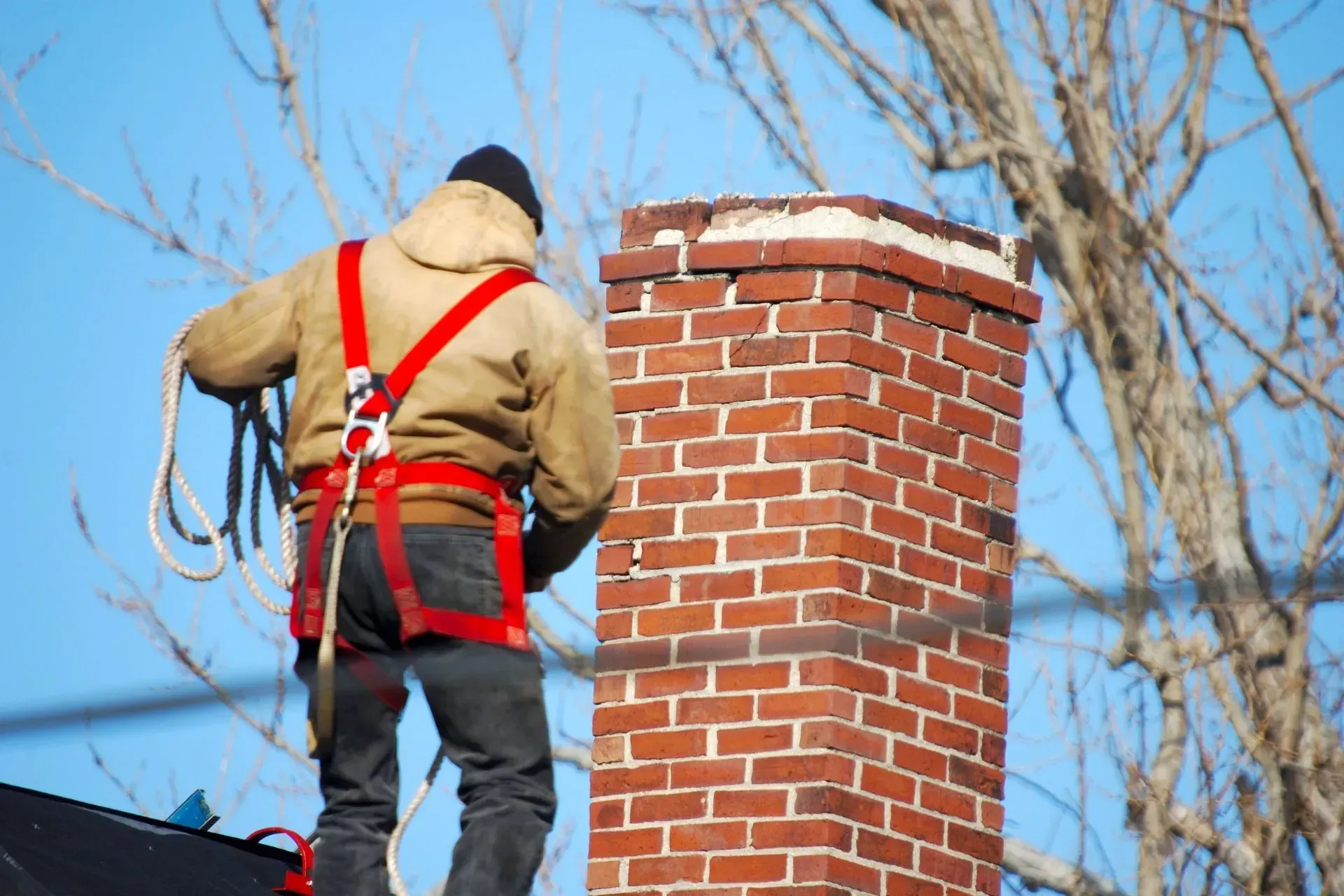As the leaves turn and a chill enters the air, the comforting glow of a fireplace becomes increasingly inviting. But before you light that first cozy fire of the season, it’s crucial to ensure your chimney is safe and ready for the task. A neglected chimney can pose significant risks, including house fires and carbon monoxide poisoning. This is where a thorough pre-inspection comes in. Here at Portland Chimney Service, we believe that an informed homeowner is a safe homeowner. This comprehensive guide will walk you through everything you need to know about chimney pre-inspections, empowering you to take proactive steps toward a safer home.

Why a Chimney Inspection is Non-Negotiable
Many homeowners underestimate the importance of regular chimney inspections. Your chimney is more than just a picturesque feature of your home; it’s a critical component of your heating system that requires regular maintenance to function safely and efficiently. The National Fire Protection Association (NFPA) recommends annual inspections for all chimneys, fireplaces, and vents. This isn't just a suggestion; it's a vital safety measure. Over time, a substance called creosote, a byproduct of burning wood, can build up inside your chimney. This tar-like substance is highly flammable and is a leading cause of chimney fires. Regular inspections can identify and address creosote buildup before it becomes a serious hazard.
Beyond the fire risk, inspections can uncover a host of other potential issues. Structural problems like cracks in the masonry or a deteriorating flue liner can allow dangerous gases, including carbon monoxide, to leak into your home. Blockages from animal nests, leaves, and other debris can also impede proper ventilation, forcing smoke and harmful fumes back into your living space. A professional inspection can spot these issues early, saving you from costly repairs and, more importantly, keeping your family safe.
The Homeowner's DIY Chimney Inspection Checklist
While a professional inspection is essential, homeowners can and should perform their own visual checks throughout the year. A DIY inspection can help you spot potential problems early and know when it’s time to call in the experts. Here’s a step-by-step checklist to guide you through a basic visual inspection of your chimney system.
Exterior Chimney Checklist:
- Check the Chimney Structure: From a safe distance on the ground, examine the overall structure of your chimney. Look for any signs of leaning or tilting. Pay close attention to the bricks and mortar. Are there any cracks, crumbling mortar, or missing bricks? These could be signs of structural damage that need immediate attention.
- Inspect the Chimney Crown: The chimney crown is the concrete or metal slab at the top of your chimney that prevents water from seeping into the masonry. Using binoculars if necessary, look for any cracks or deterioration. A damaged crown can lead to significant water damage over time.
- Examine the Chimney Cap: The chimney cap is the metal covering with mesh sides that sits atop the flue. It’s designed to keep rain, debris, and animals out of your chimney. Ensure it is securely in place and free of any obstructions like leaves or nests.
- Look at the Flashing: The flashing is the sheet metal that seals the seam between your chimney and your roof. Check for any signs of rust, gaps, or damage. Damaged flashing is a common source of roof leaks.
Interior Chimney Checklist:
- Inspect the Firebox: The firebox is where you build your fire. Examine the bricks or refractory panels for any cracks or missing mortar. The firebox endures extreme temperatures, so it's a common area for wear and tear.
- Check the Damper: The damper is a metal plate inside the flue that can be opened or closed to control airflow. Make sure it operates smoothly and creates a tight seal when closed. A faulty damper can lead to heat loss and drafts.
- Look Up the Flue: With the damper open, use a bright flashlight to look up into the flue. Check for any obstructions, such as animal nests or debris. You should also look for signs of creosote buildup, which appears as a black, tar-like substance. If you see a significant accumulation (more than 1/8 inch thick), it’s time for a professional cleaning.
- Test Your Detectors: Ensure you have working smoke and carbon monoxide detectors near your fireplace and in other key areas of your home. Test them regularly and replace the batteries as needed.
Common Chimney Problems and Warning Signs
Being aware of the common warning signs of chimney trouble can help you address issues before they escalate. If you notice any of the following, it’s a good indication that you need a professional chimney inspection:
- Smoke or Odors Inside the House: If smoke or unusual odors are entering your home when you have a fire, it could be a sign of a blockage in the flue or a problem with the draft.
- Water Leaks or Stains: Water stains on the walls or ceiling near your chimney are a clear indicator of a leak. This could be due to damaged flashing, a cracked crown, or porous masonry.
- Visible Cracks or Damage: Any visible cracks in the chimney's exterior or interior, as well as crumbling mortar or spalling bricks (where the face of the brick flakes off), are signs of deterioration that should not be ignored.
- White Staining on the Exterior: A white, powdery substance on the outside of your chimney, known as efflorescence, is a sign of moisture penetration.
- Debris in the Fireplace: Finding pieces of tile, mortar, or other debris in your firebox could indicate a deteriorating flue liner.
Understanding the Levels of Professional Chimney Inspections
When you hire a professional, they will perform an inspection based on the standards set by the Chimney Safety Institute of America (CSIA) and the NFPA. There are three levels of inspection, each suited for different situations.
| Inspection Level | Description | When It's Needed |
|---|---|---|
| Level 1 | A visual inspection of the readily accessible areas of the chimney's interior and exterior. This includes the firebox, damper, and smoke chamber. | This is the standard annual inspection for chimneys that have not undergone any changes and are operating without any known issues. |
| Level 2 | Includes everything in a Level 1 inspection, plus an examination of accessible portions of the attic, crawlspace, and basement. It often involves the use of a video camera to inspect the entire flue liner. | Required when buying or selling a home, after a chimney fire or other event that may have caused damage, or when making changes to the system (like installing a new appliance). |
| Level 3 | The most in-depth inspection, which may require the removal of parts of the chimney or surrounding structure to access concealed areas. | Only necessary when a serious hazard is suspected that cannot be fully assessed with a Level 1 or Level 2 inspection. |
The Importance of Professional Chimney Services
While a DIY inspection is a great first step, it’s not a substitute for a professional evaluation. Certified chimney sweeps have the training, experience, and specialized equipment to identify issues that an untrained eye might miss. At Portland Chimney Service, our team is dedicated to ensuring the safety and efficiency of your chimney. To learn more about our comprehensive chimney services, we invite you to explore what we have to offer.
Regular professional maintenance not only protects your home and family but also prolongs the life of your chimney and improves its performance. Investing in a professional inspection and cleaning is a small price to pay for peace of mind. For more information about our company and our commitment to safety, please visit our about us page.
Your Next Steps for a Safe and Cozy Season
Now that you’re armed with the knowledge of what to look for, take some time to conduct your own visual inspection of your chimney. If you notice any of the warning signs we’ve discussed, or if it’s been more than a year since your last professional inspection, don’t hesitate to take the next step. Protecting your home and loved ones is paramount, and a well-maintained chimney is a key part of that.
Don’t wait for a problem to arise. Be proactive about your chimney’s health. If you have any questions or would like to schedule a professional inspection, please contact us today. The team at Portland Chimney Service is here to help you enjoy a safe and warm fireside experience all season long.
Frequently Asked Questions
How often should I have my chimney inspected?
The National Fire Protection Association (NFPA) recommends that chimneys, fireplaces, and vents should be inspected at least once a year. More frequent inspections may be necessary if you use your fireplace often.
Can I perform a chimney inspection myself?
While homeowners can and should perform regular visual inspections to spot obvious issues, a professional inspection is crucial for a thorough assessment. Professionals have the expertise and specialized tools to identify hidden dangers you might miss.
What are the most common signs that my chimney needs a professional inspection?
Common warning signs include smoke or odors inside your home, visible cracks in the masonry, water leaks or stains near the chimney, white staining on the exterior (efflorescence), and debris falling into your fireplace.
